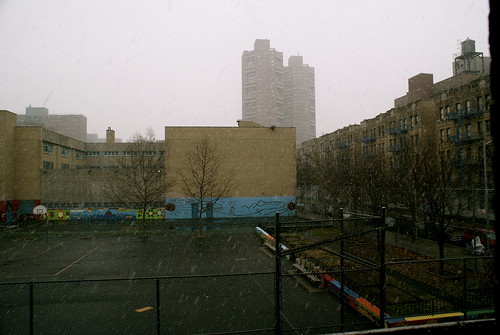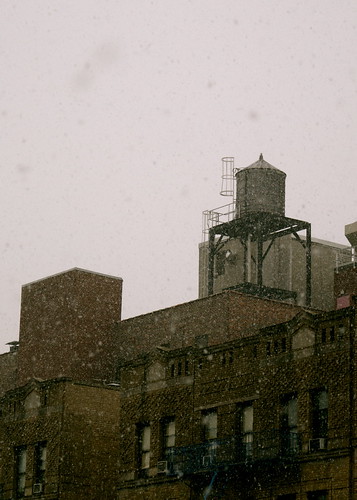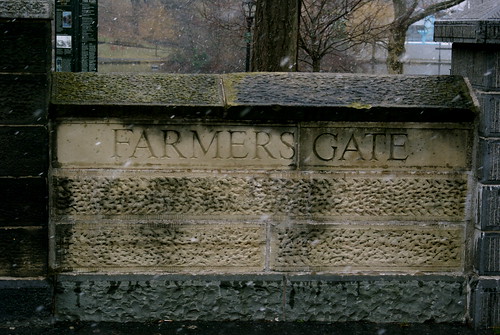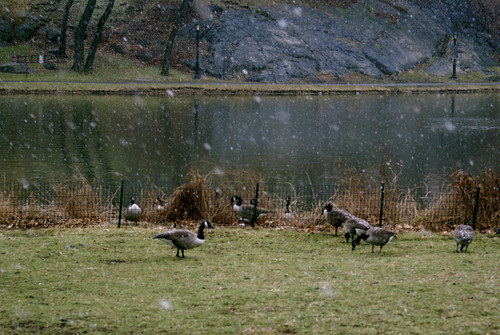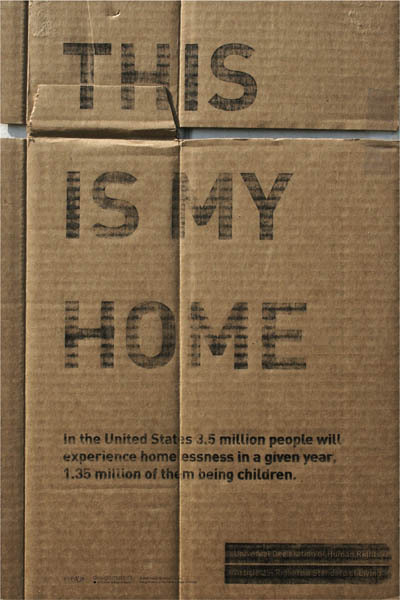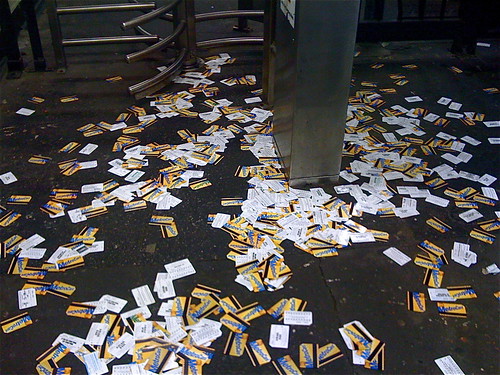This is my final policy paper... It started as an NYC program on organic waste management, then moved to a federal piece on automotive emissions standards. Neither was of real interest to me, which is my bad for bending to fit in with the group overall.
Policy Collection ~ Presidential Automotive Emission Suggestions,
Presidential Automotive Emission Suggestions
My presidential policy focused on a wide scale massive increase in automotive fuel efficiency from three main cores: public transit, new production personal automobiles, and retrofits to existing vehicles. Making a solid effort at the daily use patterns of every citizen will pave the country for the understanding necessary to make other personal changes. It also will make a direct stab at the inarguable flow of carbon dioxide into the atmosphere responding to the fact that the
Efficiency: More Efficient Vehicles
President-elect Barack Obama will need to expediently transition the nation to new and existing alternative energy sources. For this policy to be successful, it will need to address the fleet of existing American automobiles as well as new production models, all while making these options financially feasible for citizens, as well as the currently slumping oil-dependent automotive industry. Currently there are approximately 250 million automobiles using
The most efficient way to deal with this move towards automotive-based carbon neutrality is to create task forces for both public transit and personal automobile use. Public transit funding can create public works-like programs that incorporate spurred employment with a branching infrastructure meant solely for urban and regional transit programs throughout the country in cities and regions identified as target populations in need of public transit options. Mandating that all of the public transit sources use carbon neutral or flex fuel options aimed to wean many citizens from automobile dependence, and conversely, national oil dependence.
In addition, a mandates necessitating that all new passenger vehicles are flex-fuel the end of 2012 should be enacted immediately. Emphasis on developing technology to update many of the popular car models in existence would be needed in funding appropriations. Adjusting current pending legislation of fuel economy standards of 35 miles per gallon by 2020 should be extended to 50 miles per gallon for SUVs and all trucks and 65 miles per gallon for all other passenger vehicles. This will benefit a move towards dependence upon cellulosic ethanol and biofuels from grasses, straws, and non-kernel corn cellulose in substitute for gasoline. Tax-wise, retooling tax credits and loan guarantees for domestic auto plants and parts manufacturers should aim towards developing vehicle technology that uses lightweight materials and redesigned engines.
Additionally, abolishing the 60,000-unit-per-manufacturer cap on buyer tax credits will spur supply and demand of flex-fuels vehicles domestically for consumers currently seeking flex-fuel.
Originally, when assigned to come up with a policy proposal, the assignment enabled us to choose city, state, or federal programs that we personally felt should be created and after newly elected officials transitioned into office. The idea was that programs would make communities, states, or the country more sustainable or raise the focus of sustainable living via programming that would lead to voluntary behavior changes. Personally, I feel that pilot programs with high visibility and basic infrastructure work the best in an urban setting.
Think Piece: Policy Implementation Ideas for Sustainability: Citywide Composting (NYC)
New York City could enjoy measurable benefit from a fairly basic urban agriculture program seen in other urban settings. These are programs that are implemented on a very local basis to promote community and sustainable values that can create not only economy but also education for the city. They are taken from San Francisco programming which is shown to be successful and can be translated to the urban spaces in New York City with minimal funding when compared to landfill and other resource costs.
San Francisco has long taken action in recycling consumer materials and is now taking further steps by including composting in their sanitation services. The green bins are placed with trash bins and hold all compostable materials that are then taken to city composting facilities in northern California. An estimated over 300 tons of organic material are collected daily reducing landfill needs and increasing economy utilizing the compostable outcome, hummus, in California agriculture. The New York City Department of Sanitation claims a lack of funding and manpower for such an endeavor and makes referrals to other community and ecology groups in the city, which do compost on very small-scale settings. The DSNY has formed the New York City Compost Project to do these some of these things as well as to educate. While this referral is helpful, it is very limited in the reach of education and does not successfully engender the public to begin thinking about their refuse and how to make it work for them or the city at large.
Beginning pilot programs in different high density zip codes (or sanitation routes) to test the merits of a citywide composting drive would bring notice to the need for this service as well as acclimatize citizens to be more aware of their refuse. Incentivizing restaurants to participate as well would make a sizable dent in food refuse. Organizations such as City Harvest already procure unused edible food collection, therefore, there is no reason why inedible food collection could not be collected by Sanitation Department workers (enabled as part of such a pilot program).
The New York Sanitation Department already recognizes groups making composting more translatable to the average person. The Lower East Side Ecology Center facilitates personal composting clinics giving subsidized materials to attendees. While this subsidized funding is certainly necessary, it is no way feasible to conquer or address the mounting problem of refuse in the city and the need for landfills to contain it. Looking at an urban program like that in San Francisco would show the feasibility of a similar program in an urban center like New York City and make active steps towards a solution.
Sources:
San Francisco Recycling
San Francisco Environmental Organization
Sunset Scavenger
New York City Compost Organization
Wasteless New York City
NRDC Recycling
Personal Reflections
Firstly, I would like to say that I think these policies may have been far more productive if they had not been so team influenced. I would have felt freer to do a topic which did not fit so well in with that of my group if I had not needed to tie my goals into theirs. I feel this unintentionally limited the areas we could work with reminiscent of how PlaNYC 2030 has no public health aspect. Basically, my group had me change my focus to fit in better in the instructed overall plan. My ideal national focus would have been on food and water security through water use in agriculture. In theory, this change in agricultural strategies could be stretched to relate to a lessening of fossil fuels used and carbon dioxide emitted in the use of machinery and transport, however, I believe that our national and local water strategies need a serious overhaul, perhaps even more stringently than our oil dependence.
Another federal idea was to focus on obesity through a sin tax system interlocked with insurance surcharges and a simultaneous resurrection of The President’s Physical Fitness Challenge. With the media support of this president and his and his wife’s personal fitness goals, I feel this program could make the obese feel accountable for their personal weight choices. They would begin to see that even if they do not feel they need a change, the rest of the country should not absorb their increased expense cost for health care for the average citizen. This would benefit those who could not currently manage affordable health care insurance by making their choice of healthier lifestyles a reflection in cost. The President’s Physical Fitness Challenge would then give school-aged children an outlet for working on their own fitness, teaching them goal setting and giving them a feeling of physical achievement through competing with their peers in a positive setting.
Also, having a group of eight people was detrimental to all of our work, making us change fundamentals of our individual programs to tie them together. I understand that in real policy teams, there are potentially larger numbers of participants, but this did not benefit our group. We really should have organized ourselves into two smaller groups. Many of the polish points were lost in our presentation and group paper due to this fact. I also would have liked to have had some focus in class on policy writing, on the fundamental drafting of policy briefs. I feel this would have been beneficial to everyone and would have made our work more focused on the planning and less focused on figuring out if we were drafting documents correctly. Formulating ideas for policies seem to be moving along more fluidly, however, despite this.

